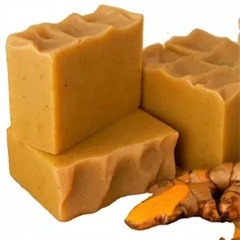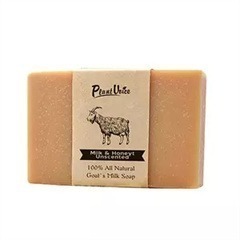Mechanism of Soap: Soap is made up of molecules with hydrophilic (water-attracting) and hydrophobic (water-repellent) ends. When you wash your hands or surfaces with soap and water, these molecules work together to surround and encapsulate dirt, oil, and germs.
The hydrophobic ends of the soap molecules attach to oils and fats on your skin or surfaces, while the hydrophilic ends remain attached to water. This allows the soap to create tiny structures called micelles, which trap dirt, bacteria, viruses, and other contaminants.
Effectiveness in Removing Germs: Soap is highly effective at removing bacteria and other germs from surfaces. The mechanical action of rubbing your hands or surfaces while using soap helps to loosen and lift germs from the skin or the surfaces you’re cleaning. As you rinse with water, the soap and the trapped germs are washed away.
However, it’s important to note that while soap can effectively remove many types of germs, it may not be equally effective against all types of pathogens. For example, soap may not be as effective in removing or inactivating certain viruses that are particularly resilient, such as norovirus or certain strains of the flu virus. In these cases, the use of alcohol-based sanitizers or disinfectants may be recommended.
Bacterial Inactivation: Soap itself does not have the inherent ability to kill bacteria. Instead, its primary role is to physically remove bacteria from surfaces. However, during the process of washing with soap and water, some bacteria may be disrupted and rendered inactive or less viable due to the mechanical action and the breakdown of the lipid (fat) layers that surround them.
Important Considerations:
- Proper Technique: To effectively remove germs, it’s important to wash your hands thoroughly with soap and water for at least 20 seconds. This includes scrubbing all areas of your hands, including between your fingers and under your nails.
- Alcohol-Based Sanitizers: If soap and water are not available, alcohol-based hand sanitizers with at least 60% alcohol content can be used to kill or inactivate many types of germs on your hands. Sanitizers are particularly useful when soap and water are not accessible.
- Disinfection: For surfaces that may harbor harmful germs, especially in healthcare settings or during disease outbreaks, using disinfectants designed to kill specific pathogens is recommended. Disinfectants are designed to kill or inactivate a broad range of microorganisms.
In summary, while soap is effective in removing germs from the skin and surfaces, its primary role is to mechanically lift away contaminants rather than directly kill them. Combining proper handwashing techniques, soap, and, when needed, alcohol-based sanitizers or disinfectants can help maintain good hygiene and reduce the risk of infections.





































